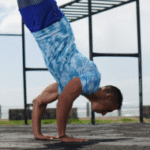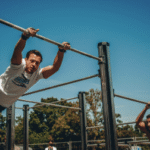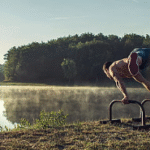Why Preparation is Key for Your Initial Calisthenics Consultation
Investing time and thought into preparing for your consultation maximizes its value for both you and your potential coach:
Maximizes Consultation Time: A prepared client allows the coach to efficiently gather essential information, dedicating more precious time to discussing specific solutions, strategies, and answering your questions, rather than on basic data collection.
Ensures All Needs Are Addressed: You won’t forget critical questions about their methodology, pricing, or your own health details, guaranteeing a comprehensive discussion.
Facilitates Accurate Assessment: By providing a clear and honest picture of your background, you help the coach understand your starting point and design an assessment (and later, a program) that is perfectly tailored and safe for you.
Builds Confidence and Engagement: Being prepared makes you feel more confident and engaged in the conversation, allowing you to ask more informed questions and contribute actively to the discussion about your fitness future.
Aids Effective Decision-Making: Armed with all the necessary information, you’ll be able to compare potential coaches effectively and confidently choose the “perfect match” for your calisthenics aspirations in Houston.
—
Step-by-Step Guide: How to Prepare for Your Initial Private Calisthenics Consultation in Houston
Follow these detailed steps to ensure you’re fully ready for your first meeting with a calisthenics coach in Houston:
Step 1: Clarify Your Goals & Motivation (The “Why” Behind Your Journey)
This is the most important self-reflection and will guide the entire consultation. Be as specific as possible:
What exactly do you want to achieve? Move beyond vague statements like “get stronger” or “get fit.” Do you aim for:
Foundational Strength: (e.g., perform 10 perfect push-ups, hold a plank for 60 seconds, achieve your first unassisted pull-up)?
Mastering Specific Skills: (e.g., learn a freestanding handstand, achieve a muscle-up, work towards a planche, learn an L-sit)?
Building Significant Lean Muscle & Definition: (e.g., body recomposition focusing on bodyweight aesthetics)?
Improving Functional Strength & Body Control: (e.g., move more easily in daily life, enhance balance and coordination)?
Rehabilitation/Pain Management: (e.g., training safely around a past shoulder injury from sports common in Houston like baseball or football, or managing persistent back pain from a desk job).
What motivates you? Is it health, aesthetics, performance, overcoming a personal challenge, or a desire for self-mastery?
What are your long-term aspirations? Where do you envision your calisthenics journey in 1-2 years?
Step 2: Document Your Health & Fitness History (The “What” You Bring to the Table)
Be thorough and completely honest about your background. This information is critical for your safety and for the coach to design an appropriate program.
Medical Background:
Any chronic medical conditions (e.g., diabetes, asthma, hypertension)?
Past surgeries (provide dates and details of recovery)?
Current medications (and any potential side effects that might impact energy or performance)?
Are you currently under a doctor’s care for any condition? (Be prepared to discuss obtaining medical clearance if applicable).
Injury History:
Detail any past or current injuries (e.g., shoulder impingement, wrist pain, knee issues, lower back discomfort – these are common areas of concern in calisthenics).
When did the injury occur? How was it diagnosed (if applicable)? What treatment did you receive (e.g., physical therapy in Houston)? Are you still experiencing pain or limitations (describe the type, intensity, and what aggravates/alleviates it)?
Exercise Background:
What types of exercise have you done before (e.g., weightlifting, cardio, yoga, Pilates, sports, martial arts)?
How consistently have you exercised in the past year?
What training methods or exercises have worked well for you? What didn’t? What did you enjoy/dislike?
Lifestyle Factors:
Describe your typical work schedule (e.g., long hours downtown, frequent travel – common in Houston’s business environment).
Average hours of sleep per night.
General stress levels.
Basic overview of your typical diet (e.g., balanced, fast food heavy, vegetarian, any allergies).
Step 3: Assess Your Current Physical Capabilities (The “Where You Are” Now)
Be realistic and honest about what you can currently do.
Current Strength Levels: Can you do a full push-up (how many)? An unassisted pull-up (or how many assisted)? How deep can you comfortably squat? How long can you hold a basic plank?
Mobility Limitations: Note any stiffness or limited range of motion (e.g., can you raise your arms straight overhead without arching your lower back? Can you touch your toes comfortably? Do your wrists feel stiff?).
(Optional but Recommended): Record a Short Video: If you’re comfortable, record yourself performing a few basic bodyweight movements (e.g., a bodyweight squat from a side view, a standard push-up, or a basic plank hold) from a side and/or front view. This can provide valuable initial insights for the coach during the consultation, especially if it’s a virtual call.
Step 4: Prepare Your Questions for the Coach (The “How” They Will Help You)
This is your opportunity to interview them as much as they are assessing you. Have these critical questions ready:
About Their Qualifications & Experience:
“What personal training certifications do you hold, and are they NCCA-accredited?” (e.g., NASM, ACE, ACSM, NSCA).
“Do you have specialized calisthenics or bodyweight training certifications/background (e.g., PCC, GymnasticBodies methodology, WSWCF Academy)?”
“How long have you been coaching calisthenics specifically, and what is your personal calisthenics background?”
“Can you provide client testimonials or show a portfolio of client progress (e.g., before/after photos, videos of client skill achievement)?”
About Their Training Methodology & Philosophy:
“What is your overall coaching philosophy for calisthenics (e.g., safety-first, progressive overload, holistic approach, skill-based)?”
“How do you design personalized calisthenics programs, and what role does periodization play?”
“How do you provide form correction and feedback during sessions? (For online coaching, specifically ask how they utilize video analysis for feedback.)”
“What is your approach to managing clients with existing injuries or physical limitations?” (Listen for mention of requiring medical clearance and collaborating with medical professionals like physical therapists in Houston).
“How do you integrate mobility work, nutrition guidance, and recovery strategies (sleep, stress management) into your calisthenics programs?”
About Logistics & Practicalities:
“Where do you conduct your private calisthenics sessions in Houston? (e.g., your studio, a commercial gym, public parks like Memorial Park or Buffalo Bayou Park, client’s home/apartment gym, or entirely online?)”
“What is your typical availability and how does your scheduling process work?”
“What is your pricing structure (e.g., hourly rate, package deals, monthly retainers for online)? Are there any additional or hidden fees (e.g., facility access fees, travel fees for home visits)?”
“What is your cancellation and rescheduling policy?”
“How do you track client progress in calisthenics?”
“How do you communicate with clients outside of scheduled sessions (e.g., app messaging, virtual check-ins)?”
Step 5: Research the Coach/Studio (Pre-Vetting Continues)
Even after receiving their information, do some independent research:
Check Online Presence: Visit their website, social media profiles. Look for professionalism, consistency in messaging, and additional content that demonstrates their expertise (e.g., blog posts, articles).
Review Testimonials & Reviews: Look for reviews on various platforms. Pay attention to comments specifically praising their calisthenics coaching, safety, or ability to help clients achieve specific skills.
Observe Coaching Style (if possible): If they have videos of themselves coaching, observe how they interact with clients and provide cues.
Step 6: Be Ready to Discuss Budget & Schedule
Have a clear idea of your comfortable financial investment for private training. Be upfront about this if the coach asks about your budget.
Know your consistent availability for sessions (e.g., “Monday and Wednesday evenings after 6 PM,” or “Tuesdays/Thursdays during lunch break”).
Step 7: Arrive Prepared (Mentally & Physically)
Punctuality: Arrive on time (or a few minutes early) for your consultation.
Honesty & Openness: Be completely transparent with your coach about your goals, health history, and current state. This fosters trust and ensures the most accurate assessment and program design.
Comfortable Attire: Wear comfortable athletic clothing, as the consultation will likely involve a brief movement assessment to evaluate your current capabilities.
—
Conclusion: Empowering Your Choice in Houston
Preparing thoroughly for your initial private calisthenics consultation in Houston empowers you to take control of your fitness journey. By clarifying your needs, documenting your history, assessing your capabilities, and preparing intelligent questions, you’ll ensure a productive discussion. This diligent preparation is the foundation for selecting the perfect calisthenics coach who will safely and effectively guide you towards mastering your body and achieving your fitness aspirations.

Why Preparation is Key for Your Initial Calisthenics Consultation
Route
Calisthenics Gym Houston Functional Bodyweight Training
Secondary phone: (346) 483-3195
Email: info@calisthenicsclubhouston.com
URL: https://calisthenicsclubhouston.com/
Monday 6:00 AM - 7:00 PM Tuesday 6:00 AM - 7:00 PM Open now Wednesday 6:00 AM - 7:00 PM Thursday 6:00 AM - 7:00 PM Friday 12:00 PM - 6:30 PM Saturday 9:45 AM - 12:00 PM Sunday 3:00 PM - 5:00 PM





